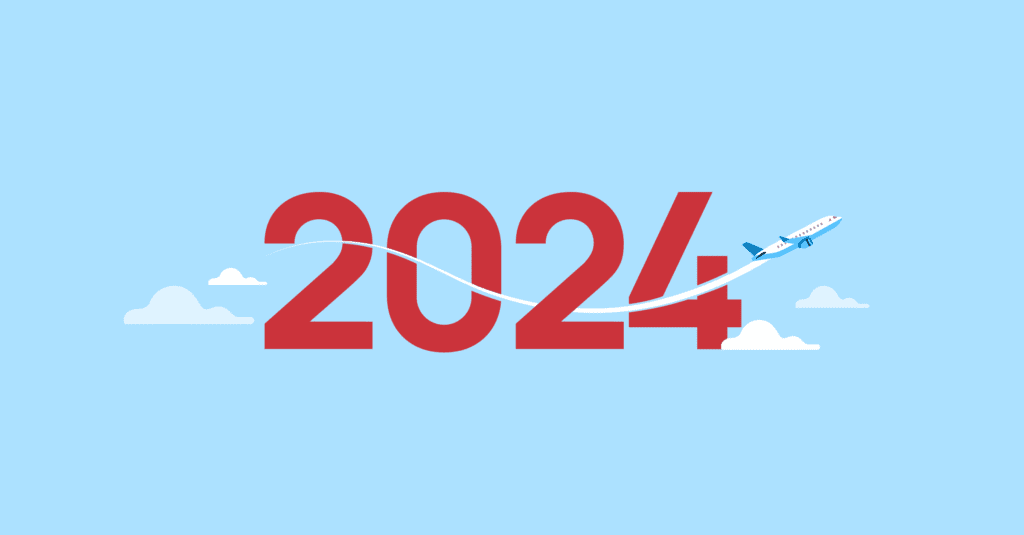Why the travel industry needs modern infrastructure

If business travelers are frustrated when hitting the road, dated technology is often the culprit behind the scenes.
Spotnana Founder and CEO Sarosh Waghmar gave the keynote presentation at the FutureTravel Summit in Barcelona last week, exploring how the limitations of travel’s legacy infrastructure hurt travelers and how a new infrastructure with modern technology can provide unparalleled experiences.
Below is an adapted version of his presentation detailing how a new infrastructure for corporate travel is empowering travelers and allowing players across the travel industry to improve their businesses with increased efficiency.
Corporate travel experiences are broken
Travelers expect a travel booking experience that feels like shopping on Amazon – great selection, low prices, personalized shopping experience, and the ability to purchase and return everything without assistance.
When they don’t get this with their corporate booking tools, they end up searching across different sites and often book outside their approved corporate platform.
As a result, travel managers struggle to enforce policies and keep travel spend under control. This is particularly painful these days because the cost of travel has gone up so dramatically.

Why does this happen?
The underlying infrastructure of the travel industry goes back to the 1960s – and it’s under tremendous stress.
One of the biggest drivers of stress is content fragmentation. When online booking tools (OBTs) were first introduced in the late 1990s, travel content was sourced almost exclusively out of global distribution systems (GDSs).
Over time, low-cost carriers and online travel agencies emerged along with other aggregators.
In 2012, the International Air Transport Association (IATA) introduced the New Distribution Capability (NDC) schema, which has finally achieved adoption in corporate travel in the past year. The GDSs and aggregators are struggling to implement the full capabilities of NDC APIs, so the most advanced booking tool providers and travel management companies (TMCs) are building direct integrations to major airlines.
Some airlines don’t offer their best content through NDC and require a different form of a direct integration. Hotel chains, as well, are starting to consider similar moves to provide their best content only via a direct integration.
When you also consider that aggregators are now available for rail content, limos, taxis, vacation rentals, meeting rooms, and more – the amount of content fragmentation is overwhelming.
Legacy booking tools and TMCs were never designed to handle this, since they rely on passenger name records (PNRs).
A PNR contains the data record for a booking. They were created long before the internet and even before relational databases were heavily adopted. PNRs were built as a way for TMCs to pass orders to suppliers and have become the primary way data is passed between systems. This is incredibly inefficient, because PNRs store information in hundreds of lines of unstructured text.
As a result, “automation” for a TMC with legacy infrastructure requires building what’s called a mid-office. This is where thousands of scripts are created to read and write unstructured text for every booking scenario and change management procedure. Quality control teams have to be staffed to ensure PNRs are complete and accurate, since this process is slow to implement and error-prone.
This was a tremendously inefficient way to automate when content was coming from one or two GDS providers. Now imagine having to create and test thousands of new scripts for every new content source including every direct NDC integration.
You can see why the current architecture is failing, and why innovation has been so slow in the travel industry.
How would we build travel infrastructure today?
What if you had the chance to build a new infrastructure for the travel industry from the ground up? How would you approach it? What technology would you use?
Today we would design a system that works with any content source, doesn’t rely on PNRs, and is able to manage the complexity of global travel programs.
Everything would run in the cloud. We’d use databases to store information instead of unstructured text. Instead of creating scripts to automate every process, we’d build microservices that handle specific tasks, automatically pass data to each other, and can be combined in different ways to automate even the most complex workflows.
A system built this way would support rapid innovation, because each part could be developed and enhanced by different engineers working in parallel, and new features could be released on a continuous basis.
Here’s another question for you. If you could create a company that builds a travel platform with this new modern architecture: would you keep it to yourself or make it open so others can build their business around it and take it to market as well?
What if suppliers, TMCs, and all the technology companies that want to sell travel could collaborate on innovation and benefit from each other’s best ideas through a common underlying infrastructure?
Why we built Spotnana
These are the questions that I asked myself when I was the CEO of a tech-forward TMC called WTMC from 2013 to 2019.
WTMC built some of the first deep direct NDC integrations to major airlines. I tried to use technology to deliver a superior traveler experience at scale, and I kept running into the limitations of legacy infrastructure time and again.
I realized that someone needed to take on the unsexy work of cleaning the gutters. This is how Spotnana was formed.
We have built a new, modern infrastructure for the travel industry, and we’ve chosen to make it open and available to everyone.
Our platform includes a Content Engine that works with any source of travel content, a System of Record that manages structured data, a Booking Engine that uses microservices to automate workflows, and user interfaces for both travelers and agents, so everyone can benefit from accessing the same content, policies, negotiated rates, and more.
We use the term Travel-as-a-Service to describe what we built because no existing term was accurate. We’re more than an online booking tool – that’s just a small piece of what sits at the top of our tech stack. The real power comes from everything that lies below the surface.
The future is now
This is the final thought I will leave you with.
The old way of delivering travel has stifled innovation for decades. It’s starting to fall apart under the pressure of NDC, growing content fragmentation, and demand from travelers for modern travel experiences.
Whether you choose to talk with us or someone else, NOW is the time to start making plans to move to a travel platform with modern infrastructure.
Want to learn more about how Spotnana’s Travel-as-a-Service platform can transform your experience? Get a demo today.






